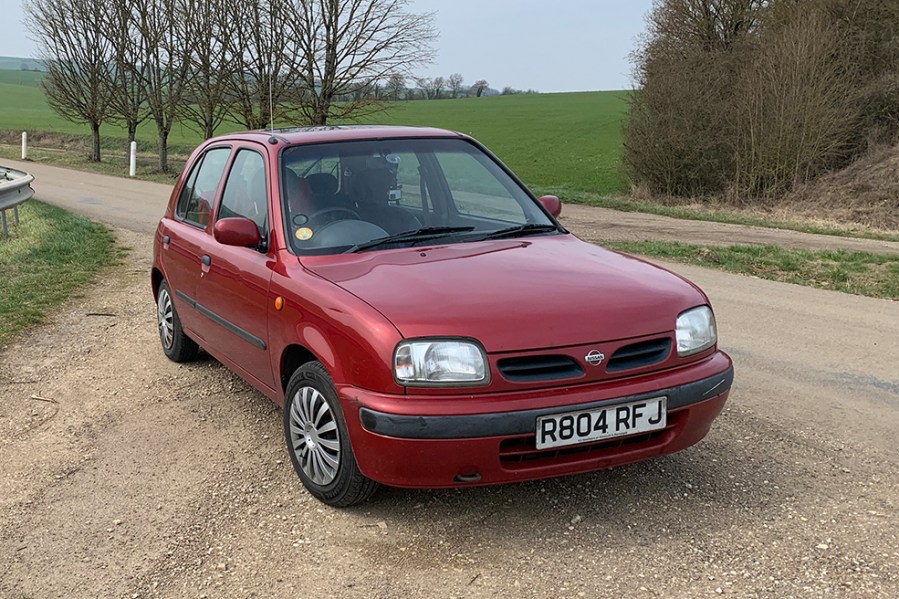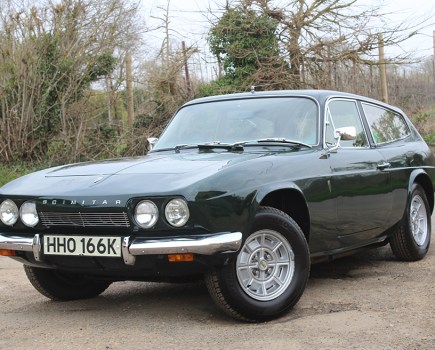Nissan brought fresh style to the supermini sector in the early 90s with its K11 Micra. Today, the model offers great modern-classic value
Words: Paul Guinness Images: Nissan, Jeff Ruggles
After almost a decade of sales success, Nissan’s first-generation K10 Micra was finally phased out in 1992 to be replaced by the K11 generation – a model that represented a huge leap forward from its dated predecessor. For starters its styling was bang on trend, with curvaceous good looks that made many of its older rivals like the Rover Metro suddenly seem behind the times. However, it was under the bonnet where the K11’s biggest advances could be found.
This car was new from the ground up, with fuel-injected 1.0- and 1.3-litre twin-cam powerplants that were clean-sheet in their design, featuring 16-valve technology and impressive outputs of 54 and 74bhp respectively. The engines were silky-smooth in terms of power delivery, ensuring the Micra was one of the most refined superminis of the early ’90s. Even the 1.0-litre version felt surprisingly quick, aided by the kind of agility that made for a genuinely fun experience on a winding B-road. Where the old Micra had been anything but entertaining, the newcomer could surprise even the most cynical of drivers.
So good was the K11 Micra, it ended up winning the 1993 European Car of the Year award – the first time that a Japanese maker had taken the top spot. It sold well, benefiting from a mid-life facelift for the 1998 model year, which brought a new grille, redesigned headlamps and restyled bumpers. A further update in 2000 saw revised engines introduced, including a more powerful 1348cc unit to replace the original 1275cc range-topper.
Produced at Nissan’s Sunderland plant, the K11 Micra proved to be a major export success for the UK, selling strongly throughout Europe during its 10-year career. More than two decades on from its demise, however, how much sense does it make as a modern classic supermini?
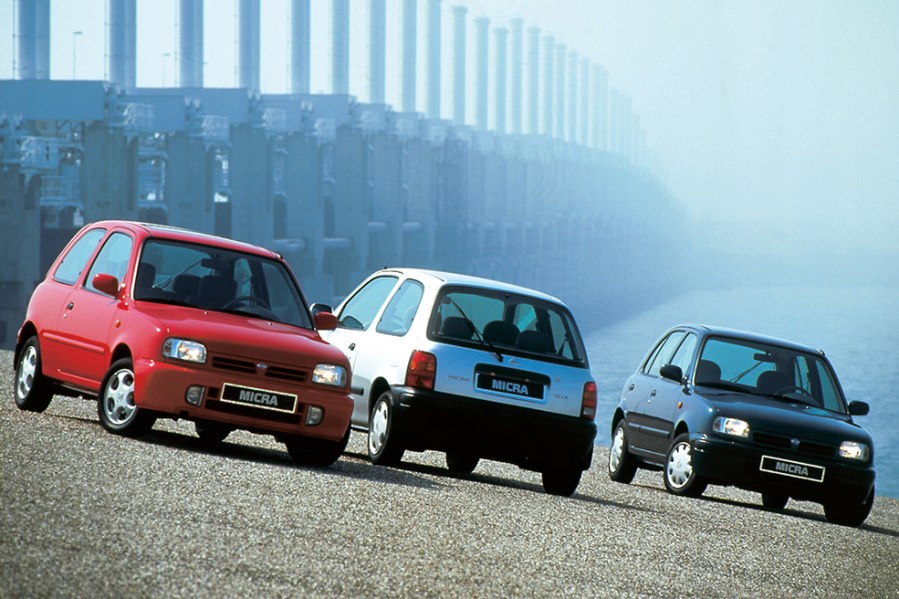
Bodywork
It’s not unusual to see K11 Micras bearing more than their fair share of battle scars, picked up after years of abuse. Many of them still work hard for a living, often with fast food delivery drivers (strange but true), so they’re sure to be showing their age aesthetically. However, the K11 was also a big seller among older private buyers – people who traditionally look after their cars and cover lower than average mileages, so there are genuinely immaculate looking survivors out there. You just need to be patient if you want one of the best.
The K11 is less rust-prone that some of its contemporaries, but you shouldn’t just assume that all is well. The sills are prone to corrosion, so check along their entire length for signs of rot, bubbling paintwork or fresh underseal. The front crossmember is particularly vulnerable, so check this carefully for rust; and the rear spring mounts are also susceptible, so make sure they’re sound. You should also research the car’s MoT history for any corrosion-related previous advisories.
Outer panels can rust on neglected cars, so check the bottoms of the doors (three- and five-door versions of the Micra were available), the rear wheelarches and the tailgate. And if a sunroof is fitted, carefully inspect the steel about it as this can also rust.
Because K11s even in decent condition are still relatively cheap to buy, there’s little point in buying one that needs major bodywork repairs. If you do take on a project, though, you’ll find aftermarket body panels and repair sections available at competitive prices. Complete sills can be found for around £70, rear wheelarch panels cost around the same, and front wings tend to be priced in the region of £90-£120 depending on the supplier. The damage-prone bumpers are easily replaced, with new ones supplied in primer from around the £115 mark, while secondhand will obviously be much cheaper.

Engine and transmission
The CG10DE (1.0) and CG13DE (1.3) engines fitted to the K11 are both capable of taking high mileages in their stride, as is the CGA3DE that replaced the larger unit in 2000. These are also engines renowned for their smoothness and refinement by standards of the time, so be wary of any example that sounds rough. Make sure you carefully check the service history, as the Micra’s reputation for reliability can lead to some owners skipping essential oil changes and services.
If there’s any unexpected rattling, it’s likely to be from the timing chain – a not uncommon issue with these engines, although most cars will run quite happily for many more miles even when the chain’s noisy. If you’re inspecting a non-runner, the fact that it won’t start could be down to a problems with its NATS (Nissan Anti-Theft System), although sometimes it can be as simple a fix as replacing the fuel pump fuse.
A small minority of K11 Micras were ordered with automatic transmission, but as it’s a ‘gearless’ CVT set-up with all that brings in terms of potential future maintenance and repair issues, we’d steer clear. The standard five-speed manual is a much better choice, offering slick and easy changes complemented by a light clutch. Many Micras were used as driving school cars in their early years, with both the gearbox and clutch proving reliable in daily use, although you should still check for signs of worn synchromesh and any hints of clutch slip. If the gearchange feels strangely stiff, it could simply be in need of fresh fluid.
Some cars suffer from a rattle under the gearstick, which is usually caused by the heat shield for the car’s second (of two) catalytic converters. It’s easy to remove or tighten once you get under the car armed with a 10mm socket.
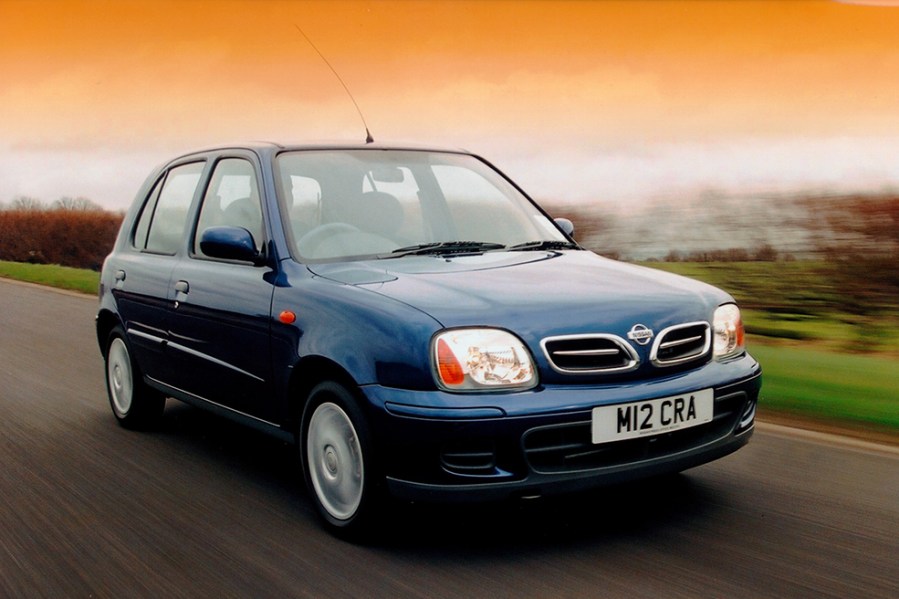
Suspension, steering and brakes
The front-wheel drive K11’s running gear is straightforward, featuring MacPherson-type struts up front and with coil springs and a beam axle bringing up the rear. You’ll obviously need to carry out the usual checks for rusty or broken coils and worn dampers; and if the Micra you’re thinking of buying feels strangely soft, then it’s probably time for a suspension refresh. Parts prices are generally reasonable, though, with aftermarket front struts available from less than £50 each, although you can spend a lot more – particularly if you fancy an upgrade and decide to invest in a set of Spax adjustables.
On any K11, check the state of the CV joint gaiters (behind the front wheels, on the driveshafts) as these are prone to splitting but are easy and inexpensive to replace. And if on your test drive you notice any banging from the rear when driving over bumps, you can be sure that you also need to change the drop links, although these simply bolt in place and are again cheap to buy.
The braking system comprises front discs and rear drums, so make sure there’s no sign of warped or scored discs, worn pads/shoes and so on. The brake pipes can suffer from rust and therefore need a careful check; and if anti-lock brakes are fitted (ABS was standard on some versions and an extra-cost option on others), you’ll obviously need to make sure everything’s working as it should.
Early K11s came with unassisted steering, while later cars had it as standard. The whole rack and pinion steering set-up should be trouble-free, but make sure the steering feels taut and there are no obvious signs of wear.

Interior, trim and electrics
The K11 received various interior upgrades during its long career, with varying levels of success. Some of the upholstery choices look garish now, but the quality is there and everything seems to wear well. You’ll obviously want to check the seats for damage and worn fabric (particularly on the outer edge of the driver’s seat), but they’re generally robust.
If the heater/demister fan is faulty (they’ll sometimes work only on their maximum setting), you may find that the resistor card needs replacing; located in the passenger footwell and attached to the bottom of the heater motor, it’s an easy change. Air-conditioning was initially an option on higher-spec cars but became more of a standard feature in later years; if fitted, you should check that it’s fully functioning.
There’s less to look for on basic, early versions of the Micra, though equipment levels did improve over the years. If the one you’re looking at comes with central locking and electric windows, check that they’re both working; electrical issues are unusual but not unheard of. If the internal release for the tailgate doesn’t work, the cable has almost certainly snapped.
Finally, check the interior for leaks and damp carpets, particularly in the passenger footwell. Often caused by a blockage under the scuttle panel, it’s easily rectified by removing the plastic trim by the wipers and clearing out any accumulated debris.
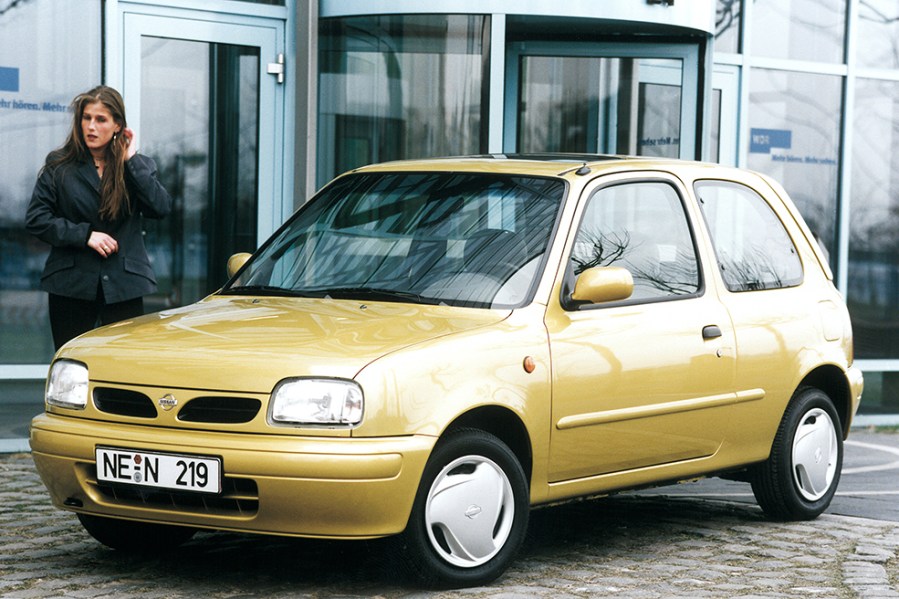
Nissan Micra (K11): our verdict
The Micra ticks so many boxes, it deserves to be on the shortlist of anyone seeking an entertaining but practical modern classic. Best news of all, however, is the sheer value for money that’s on offer; while Metros, 205s and Fiestas have all increased in value, the K11 remains almost bizarrely cheap.
When it arrived in 1992, the latest Micra seemed years ahead of the competition, its powerplant being the most advanced of any mass-market supermini. And while its curvaceous styling might not have been to all tastes, it was different enough to stand out in any crowd. The fact that production lasted a whole decade confirms just how fresh and modern the car was by standards of the early ’90s.
The Micra has a well-earned reputation for reliability, with even neglected examples refusing to die until the onset of MoT-failing rot. Spend a bit more on a decent example and you’ll have one of today’s most dependable modern classics at your disposal… with plenty of driver enjoyment thrown in.
You can pick up a Micra K11 project car from just a couple of hundred pounds, but at such a low price level you can expect a lot of work before it becomes roadworthy. Survivors with a short(ish) MoT tend to start at £600-£900, but again they’ll require work for their next test, while a budget of £1200-£1500 should secure a good example that, while not cosmetically perfect, is at least solid and has around 50,000-70,000 miles under its wheels.
Increase your budget to a figure beginning with a ‘2’ and you should have the pick of the bunch, with a surprising number of low-mileage, low-ownership K11s still being available. Some may have scuffed bumpers thanks to a lifetime of urban motoring, but there are cars out there with impressive service histories and many more years of healthy motoring ahead of them. Unless you want the best of the best, you’ll struggle to spend more than £3000 on a K11…which is great news for all the bargain hunters out there.

Nissan Micra (K11) timeline
1992
All-new Micra unveiled, with 16-valve 1.0- and 1.3-litre engines.
1993
Nissan scores its first ever European Car of the Year outright win.
1997
Facelifted version announced with redesigned grille/lights, new dash and other upgrades.
2000
Second facelift brings new 1348cc engine and power boost (to 60bhp) for 1.0-litre cars.
2002
K11 production winds down, replaced by new K12 Micra early the following year.

